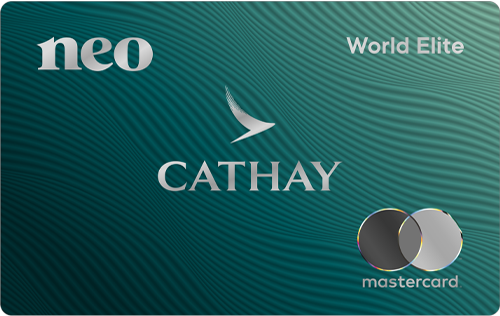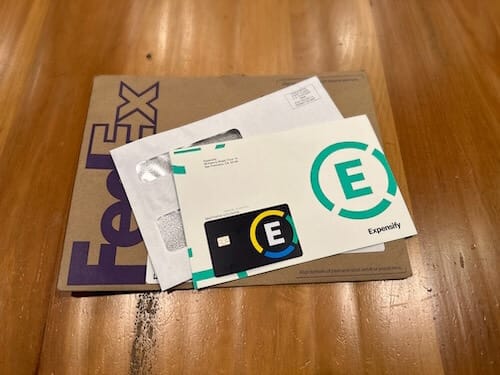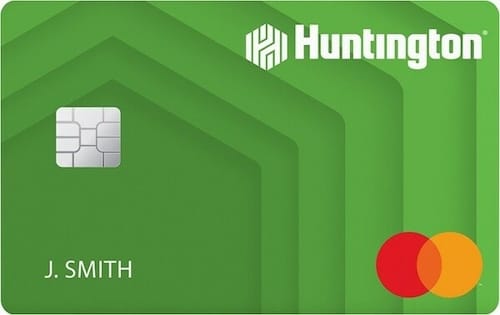CardsFTW #92: Traditional Programs, Modern Platforms
Plus, why did Expensify send me a card?
Fintech Issuing Platforms Win Traditional Co-brand Programs
Last week, Canadian banking-as-a-service platform, Neo Financial, launched a co-brand credit card in Canada for Cathay Pacific: the Cathay World Elite® Mastercard.

Neo also issues a co-brand card for Hudson's Bay, which is a 353-year-old Canadian retailer and owns Saks Fifth Avenue in the U.S.
Brim Financial, a Canadian fintech competing with Neo that recently entered the U.S. market, issues cards for Air France-KLM in Canada and powering cards for several smaller Canadian banks like Laurentian and Canadian Western.
Here in the United States, the credit-cards-as-a-service (CCAAS) pioneer, Deserve, powers cards for traditional programs like Sallie Mae and AMC Theaters. Imprint powers cards for H-E-B Markets and Westgate Resorts. Cardless powers cards for Simon Malls, Latam, and TAP Portugal. Concerto Card powers the Fisher-Price credit card and other athletic brands.
While the fintech industry has often thought of these CCAAS providers as powering startup or technology brands (and many of them do), there is a notable shift to these providers winning deals for traditional (e.g., retail or travel) co-brand deals.
In the past, I would have expected these types of programs to be won by traditional credit card issuing banks. Here in the U.S., that could mean the biggest, like Chase or Capital One, or specialists, like First National Bank of Omaha or Synchrony.
What’s happening here?
CCAAS providers offer better digital cardholder experiences, move more quickly than traditional issuers, and have lower thresholds for volume that make them successful. On the flip side, a lot of traditional issuers have been paring back their co-brand card portfolios, aiming to keep only the largest and most successful programs.
Capital constraints and costs represent one of the largest challenges for CCAAS providers. I expect to see some CCAAS providers fold or be acquired while interest rate pressure decreases and new partnerships are struck between these fintech companies and issuers who want to leverage their low cost of capital with modern software.
Meanwhile, many innovative card programs continue to be developed by startups, both as standalone card companies and as embedded offerings from growing tech brands. All of these factors combine for an optimistic future for CCAAS providers that can make it through the industry-wide challenges today.

CardsWTF: Expensify Mails My Dead Business a Card
Today, I unexpectedly received an odd FedEx envelope. Inside was a brand new Expensify Visa card with my name on it.

No company name was present on the card or envelope. Some investigation led me to realize that this card is for Vertical Finance, which I started in 2019, sold in 2021, and for which I canceled Expensify in 2020. I barely even used the card (mostly, I got it to try it out when it launched, along with Ramp, Brex, Divvy, etc.)
Not only did I receive one of these, but so did my co-founder from Vertical at her house.
This is a real W.T.F. moment. I would guess it cost $20-40 to FedEx me a new card via two-day service. Also, I imagine it has no payment account associated with it. Even if I hadn’t canceled the card, it was attached to a bank account long since closed.
Quick lesson for folks: you should not mail to users who have been inactive for several years. Good way to invite fraud (and newsletter mentions).
Huntington Launches a New Secured Card
January was a very quiet month for new card launches, but regional superbank Huntington snuck in an announcement on January 29th for their new secured card.

Huntington’s Secured Credit Card is only available to bank customers. The core feature list and value proposition is strong:
- No annual fee
- Three bureau reporting
- Clear upgrade path
- Free FICO score
- 1% cashback rewards
Some features are unclear, like the “Late Fee Grace®” feature, which gives you one extra day to pay your bill. In practice, most issuers will give you one to three days of the grace period the first time you pay late, especially because they don’t want complaints to be generated over payment processing issues.
The card requires both an open Huntington checking or savings account and a $250 deposit. That may seem low, but it can be a meaningful hurdle for certain consumers. I’m glad to see another bank putting forward a consumer-friendly secured card that will build a real credit signal (as compared to some of the more suspicious fintech offerings).
Apple Card Numbers
All the buzz this past week has been on Apple’s release of key figures for its Apple Card product. Long-time readers will know that I like my Apple Card, and I'm not surprised to see strong growth, with more than 12 million cardholders reported. Some folks have commented that this seems small, given half of the U.S. population carries an iPhone. To quote my favorite saying, though, “credit cards are hard.” Credit cards are hard, even if you’re Apple!

Apple has needed to show it can step into personal finance in a way it never has before. I imagine that for the 12 million approved cardholders, another 60 million-plus folks have applied and been denied.
Any co-brand card issuer I know would love to have 12 million accounts on a program in five years. Based on cashback of $1 billion last year, spending is between 33 billion and 100 billion per year, which is a pretty darn big portfolio. Coupled with more than $10 billion deposited in the new Apple Savings accounts, this program is the most meaningful new cobrand I am aware of in the past decade or more.
The most interesting statistic to me is that “Nearly 30 percent of Apple Card customers make two or more payments per month.” Apple pitches this as smart financial planning (making mid-month payments will reduce your overall interest). That could be. It could also be that a lot of people have really low limits and are trying to pay it off. Given my portfolio management experience is smaller than 12 million accounts (by just a few factors of 10), I only saw this behavior by higher-income/lower-credit score folks as a way to optimize spend, not as a way to save on interest. What do you think it is?
Rewards are Expensive
In case you wondered: American Express $AXP card fees do not cover the cost of providing member rewards. In 2023, American Express generated $7.26 billion in net card fees (12.0% of revenue), while spending $15.37 billion on card member rewards (25.4% of revenue) 👇🏻 pic.twitter.com/nA44wFgGWa
— Jevgenijs Kazanins (@jevgenijs) February 1, 2024
Great call out by Jevgenijs Kazanins at Popular Fintech. Amex is spending more on rewards than it generates in net card fees. Folks outside the industry often assume that rewards are based purely on the interchange fees earned by issuers. However, rewards often require more than that for premium cards, and revenue from other parts of the P&L (e.g., interest income) is an important part of the equation.
Visa Direct
One final note through the Q4 2023 earnings reports: Visa reported huge growth in Visa Direct payments of 20% year-over-year. Visa Direct is the on-network transaction executed in real-time between two Visa card numbers, as a real-time alternative to slower payments like A.C.H.
When you immediately cash out from Venmo/PayPal/Cash App, you are likely using Visa Direct (or its Mastercard equivalent, Mastercard Send). These transfers, known as Original Credit Transfers or Accounting Funding Transfers (depending on whether they’re push or pull), are very convenient and easy to use, although not free. Underlying providers are often charging fintech brands between 110 and 150bps per transaction.
We can expect to see a lot of growth in real-time payments. We will see new volume across all methods: RTP, FedNow, and OCT/AFT. People want money to move quickly, reliably, and cheaply. We’ll see how the market shapes up and if there will be pricing pressure on the card networks for this type of money movement.
Me, Elsewhere
Here are a couple of quick stories from the last week with yours truly:
Nerdwallet quoted me in 5 Credit Card Trends to Watch for in 2024. My trend was that rewards will continue to be reimagined into more personalized options.
The Seattle Times (or your local Associated Press wire paper) quoted me in Maximize your credit card rewards with minimal effort, suggesting you take it easy and enjoy your rewards. Don’t let them stress you out.
CardsFTW
CardsFTW is a weekly newsletter, released most Wednesdays, that offers insights and analysis on new products in the credit and debit card industry for both consumers and providers. CardsFTW is authored and published by Matthew Goldman and Ellen Perl of Totavi, LLC. Totavi is a boutique consulting firm specializing in fintech. We bring real operational experience that varies from the earliest days of a startup to high-growth phases and public company leadership. Visit www.totavi.com to learn more.
